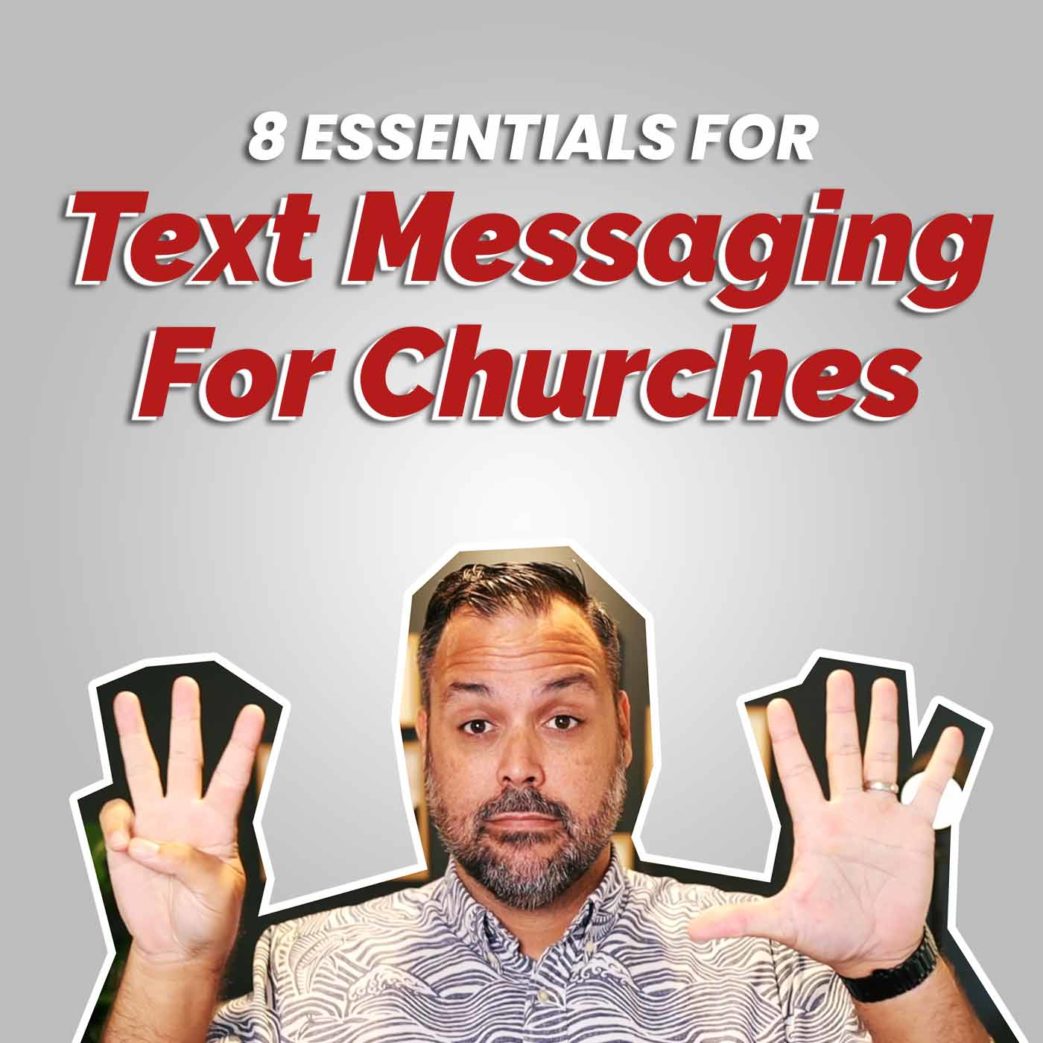How do you feel about mass text messaging for churches?
When looking for better ways to communicate with your members, texting appears to be more effective than email.
But do people want to receive mass text message updates from their church?
Well, a lot of it depends on how you as a church handle the privilege of inserting yourself into someone’s messages.
So here are eight essentials on text messaging for churches you need to recognize before pulling the trigger on a texting service.
Table of contents
First, Do People Want Text Messages?
Here are some interesting statistics to consider when it comes to mass texting.
Many sources report that SMS (short messaging service) open rates are as high as 98%. However, according to Statista, only 25% of smartphone users prefer getting business communication via text.
What this comes down to in part is how your members view your church: are you a personal acquaintance or a business organization?
Do they trust you to send appropriate messages, and not continually spam them with unwanted info?
People could change their opinions either way depending on when and how you text them.
But Before You Send that Text…
It’s highly likely your church is already communicating via text messaging. The three types of text messages your members could already be getting include:
- Mass churchwide texts
- Automated text reminders for serving or events (depending on the church management software you use)
- Group texts from small groups or serve teams they’re part of
- Individual texts from church staff and leaders
Texting from pastors, staff, and team or group leaders provides a personal touch. These could be follow-ups to weekend conversations or prayer requests.
Although you may want to limit the overall number of texts people receive, you don’t want to discourage people from personal texting which builds relationships and makes people feel cared for indivdually.
But if you decide to start utilizing a mass texting service, recognize how this fits into the big picture of communication strategy and church-related communication people are receiving.
You also need to be aware there are legal bases to cover when it comes to texting.
FCC enacted the TCPA (Telephone Consumer Protection Act) to protect consumers from robocalls and telemarketing. The law requires businesses to obtain consent and provide an opt-out. Although non-profits have different regulations, it’s still important to be familiar with the law and follow best practices for both calls and text messages.
8 Best Practices for Mass Texting Churches
1. Establish a Texting Policy
Before you start mass texting, establish an internal policy for how it will be used.
The policy has to be based on the user’s end experience – not what the ministry leaders would like to communicate. Have a centralized process and point person for approving the text message schedule, otherwise, people could end up getting ten texts a week.
In addition, determine what kind of information can be shared and how often members can expect to hear from you.
2. Get Permission
Don’t start blasting out messages without getting permission from your members. Just because they’ve given you their cell phone number when they checked in their kids doesn’t mean they want to receive weekly text blasts from you.
The easiest way to get permission is to include an opt-in box on your sign-up forms or have a message pop up after someone joins your church. You could also send a message to people’s phones after they’ve been attending for a while with the opportunity to opt in or out of messages.
3. First Message Introduction
Your first messages should lay the groundwork and cover your bases. The intro message should include
- Church’s name
- Stating you’ve agreed to receive messages from the church
- Help/Stop directions
- Message and data rates apply
When you get a text, you’re probably familiar with the call to text back “HELP” if you need assistance or “STOP” if you’d like to quit receiving messages. It’s important to include and honor requests to opt out of messages.
4. Text During Standard Business Hours
The best time to send text messages is during the standard business hours, Monday through Friday from 8 am to 5 pm.
Because text messaging feels more intimate than email, it’s important that you maintain respectful boundaries. They may not choose to read or reply until the evening, but you need to be respectful regardless.
If you have campuses across multiple time zones, you may need to segment your list when utiliziling text messaging for churches and schedule messages accordingly.
5. Use a Standard Greeting
Including a standard greeting helps avoid confusion and lets people know it’s really the church sending the message.
A lot of time, messages will come through from a short code or number that’s not in their contacts. Referencing your church in the message will ensure members know who you are and that you’re not a spammer.
6. Keep Messages Short and Sweet
People are more likely to read shorter messages, so keep them short and sweet – no more than 160 characters. Brevity is key when it comes to texts. Remember, people get many messages each day.
7. Use Emojis Sparingly
A couple of well-placed emojis can add personality to your message, but too many will clutter it up. Stick to basic emojis where the intended message or sentiment is clear and won’t cause confusion.
While images and media are great, you don’t want to clutter up people’s phones or increase message delivery costs.
8. Keep Messages Relevant and Timely
Use mass text messaging for churches wisely. It’s best reserved for the big picture, high-impact church items.
If you overuse text messaging or send people messages that don’t personally apply, they’ll be likely to stop reading or even opt-out of your messages.
So what’s your take on mass text messaging for churches? Are you using it, and if so do your members like it? Let us know below!





